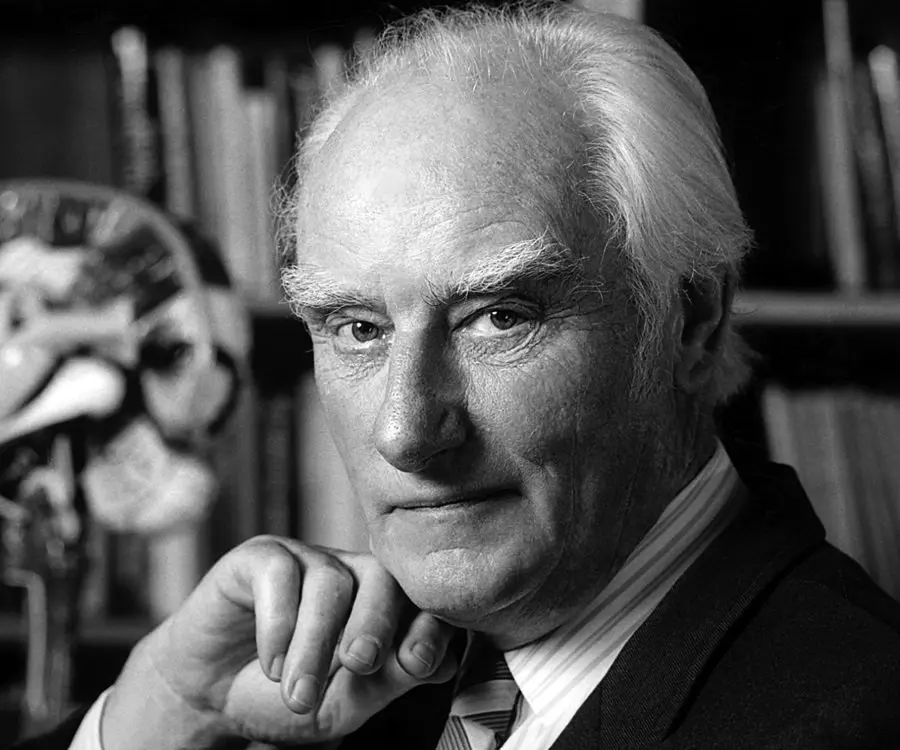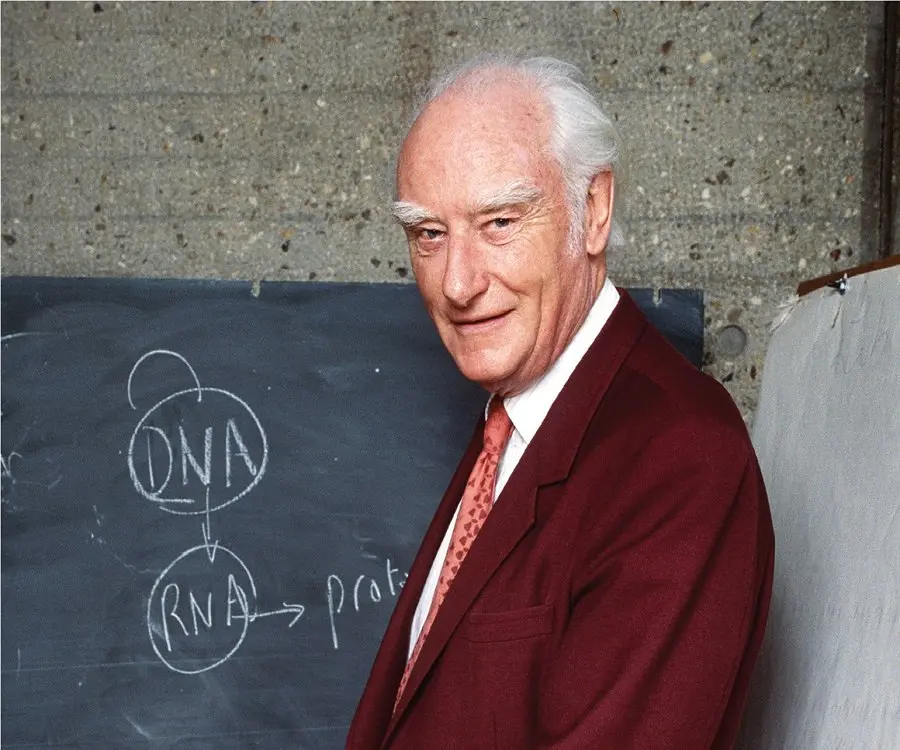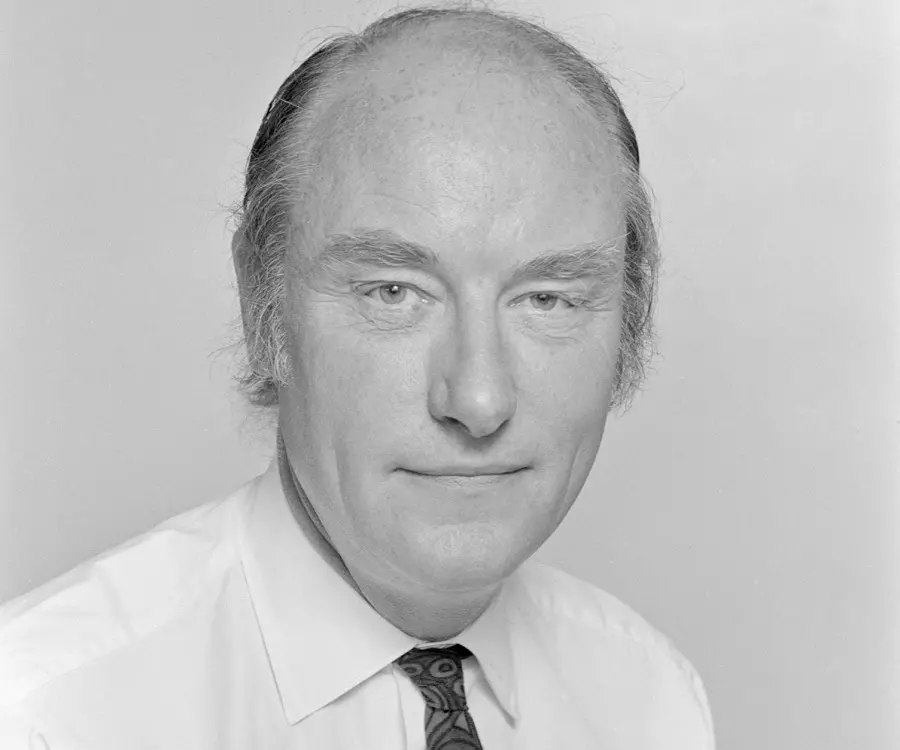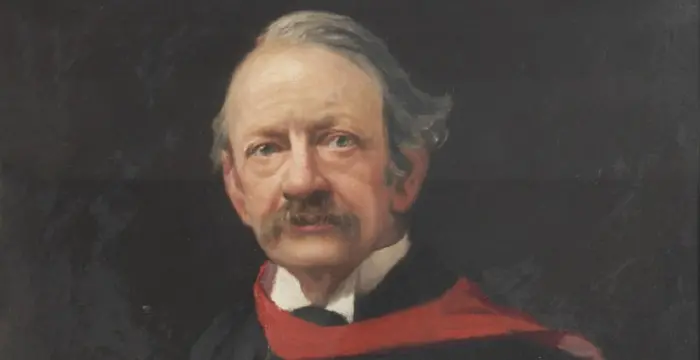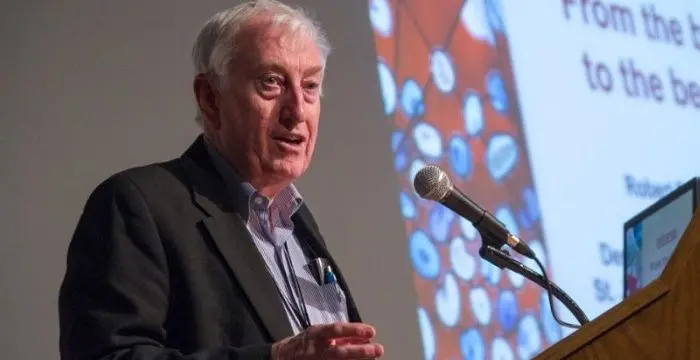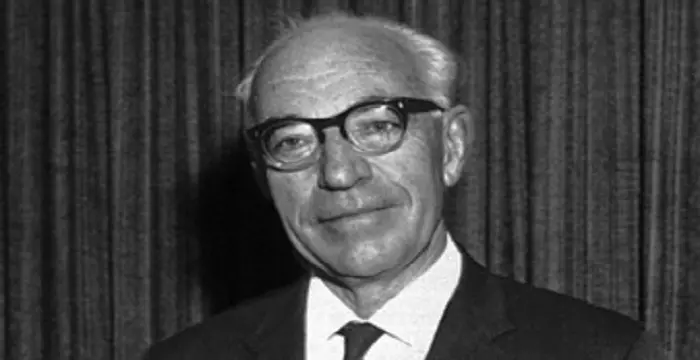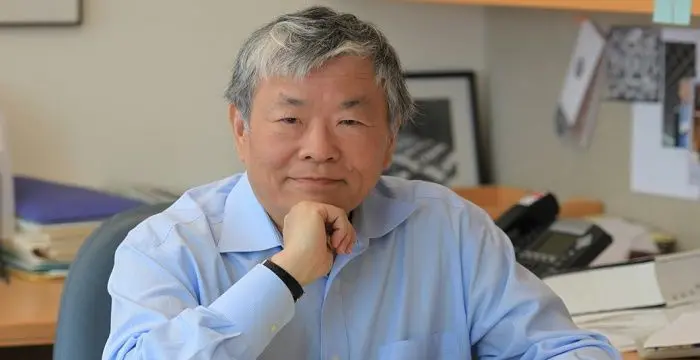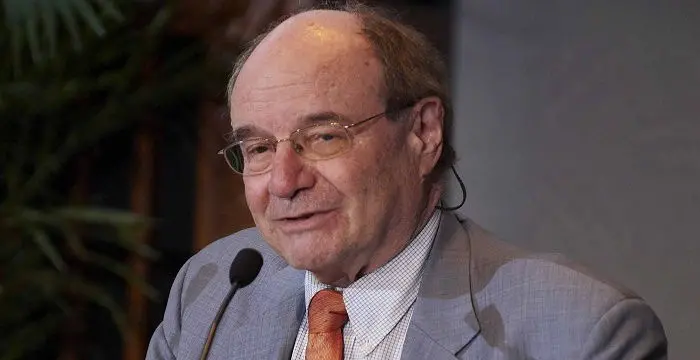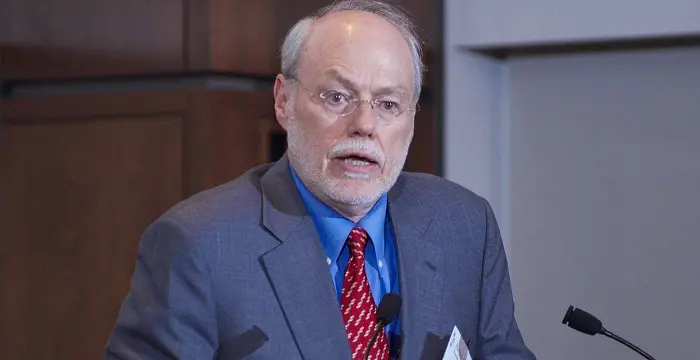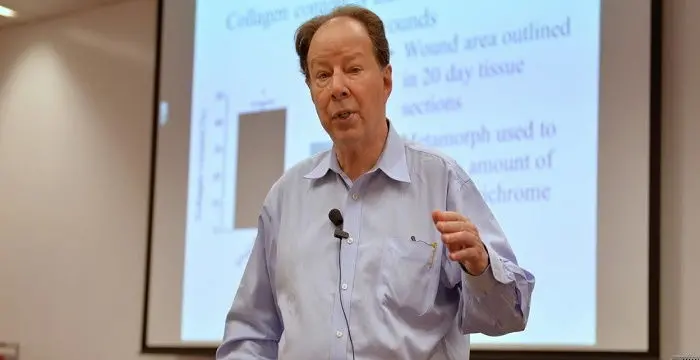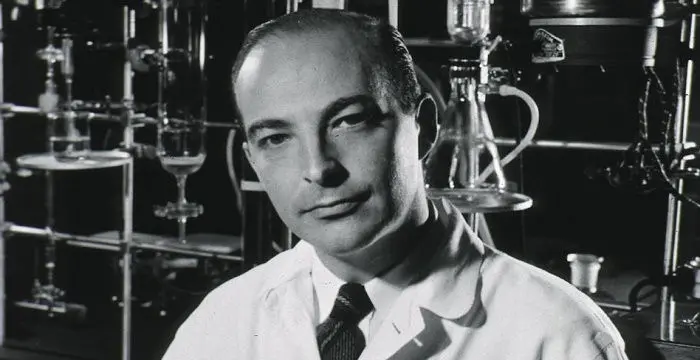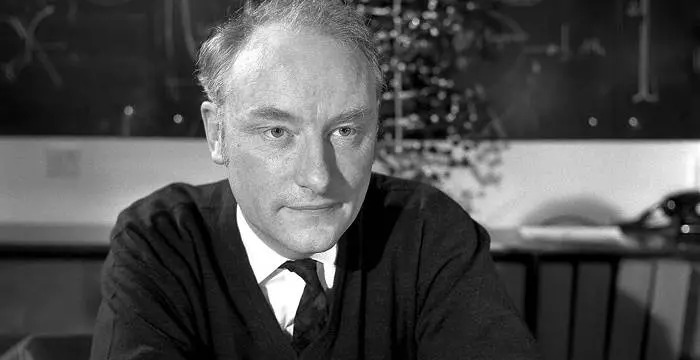
Francis Crick - Nobel Prize Winner, Birthday and Life
Francis Crick's Personal Details
Francis Crick was an English molecular biologist, biophysicist and neuroscientist, who received the Nobel Prize for Medicine
| Information | Detail |
|---|---|
| Birthday | June 8, 1916 |
| Died on | July 28, 2004 |
| Nationality | British |
| Famous | Atheists, Atheists/Agnostics, University College London, Scientists, Biologists, Biophysicists, Microbiologists, Molecular Biologists, Neuroscientists, Co-discoverer of the Structure of the Dna Molecule, Nobel Prize Winner |
| Spouses | Odile Crick, Ruth Doreen Crick |
| Siblings | Anthony |
| Known as | Francis Harry Compton Crick |
| Childrens | Gabrielle Anne, Jacqueline Marie-Therese, Michael Francis Compton |
| Universities |
|
| Notable Alumnis |
|
| Birth Place | Weston Favell, Northamptonshire, England, UK |
| Gender | Male |
| Father | Harry Crick |
| Mother | Annie Elizabeth Crick |
| Sun Sign | Gemini |
| Born in | Weston Favell, Northamptonshire, England, UK |
| Famous as | Co-discoverer of the Structure of the DNA Molecule, Nobel Prize Winner |
| Died at Age | 88 |
Francis Crick's photo
Who is Francis Crick?
Francis Harry Compton Crick was an English molecular biologist, biophysicist, and neuroscientist. He is the co-discoverer of the structure of the DNA molecule. He, along with Watson and Maurice Wilkins were jointly awarded the 1962 Nobel Prize for Physiology or Medicine ‘for their discoveries concerning the molecular structure of nucleic acids, the Double Helix and its significance for information transfer in living material’. One of the most prolific molecular biologists, he played a vital part in research related to revealing the genetic code. He is commonly known for advocating that genetic information flow in cells is fundamentally one-way, from DNA to RNA to protein. During the rest of his career, he held the post of Research Professor at the Salk Institute for Biological Studies in La Jolla, California. His later research centered on theoretical neurobiology and attempts to advance the scientific study of human consciousness.
// Famous Nobel Prize Winner
J. J. Thomson
J.J. Thomson was an English physicist and mathematician. This biography profiles his childhood, life, academic career, research and timeline.
Peter C. Doherty
Peter C Doherty is a renowned Australian scientist circle, who was received the Nobel Prize in Physiology for the discovery of how immune system recognizes virus-infected cells. Read this biography to know in details about his childhood, life, career
Childhood & Early Life
Francis Harry Compton Crick was born on 8 June 1916, in Northampton to Harry and Annie Elizabeth Crick. His father and uncle ran the family’s boot and shoe factory.
He attended the Northampton Grammar School, and at age of 14 shifted to Mill Hill School in London on scholarship and studied mathematics, physics, and chemistry with his best friend John Shilston.
In 1937, he graduated in physics from University College London. As a PhD student and Honorary Fellow of Gonville and Caius College, he worked at the Cavendish Laboratory.
His Ph.D. project on measuring viscosity of water at high temperatures was ruined, when a WWII bomb fell on his apparatus. During his second year as a PhD student, Crick was awarded the Carey Foster Research Prize.
Career
During World War II, he worked for the Admiralty Research Laboratory on the design of magnetic and acoustic mines, and was instrumental in designing a new mine that was effective against German minesweepers.
In 1947, Crick moved to the Strangeways Laboratory, Cambridge, headed by Honor Bridget Fell, with a Medical Research Council studentship, and studied the physical properties of cytoplasm in cultured fibroblast cells.
In 1949, he joined the Medical Research Unit at Cavendish Laboratory under the general direction of Nobel Prize winner Sir Lawrence Bragg and obtained his Ph.D. from the University of Cambridge five years later.
James Watson, a young American appeared at the lab in 1951, and he and Crick formed a collaborative working relationship unraveling the mysteries of the structure of DNA.
Using X-ray diffraction studies of DNA, in 1953, the two researchers constructed a molecular model, representing the known properties of DNA, consisting of two intertwined spiral strands referred to as the "double helix".
On Feb 28, 1953, James D. Watson and Frances H.C. Crick announced that they have determined the double-helix structure of DNA, the molecule containing human genes.
In 1956, Crick and Watson speculated on the structure of small viruses and suggested that spherical viruses such as Tomato bushy stunt virus had icosahedral symmetry and were made from 60 identical subunits.
In 1956, he proposed that there was a corresponding set of small "adaptor molecules" that would hydrogen-bond to short sequences of a nucleic acid, and also link to one of the amino acids.
In the early 1970s, Crick and Orgel (a British chemist), speculated living systems originated from molecules and spread by intelligent life forms using space travel technology, a process they called directed panspermia.
In 1977, following a sabbatical year at the Salk Institute for Biological Studies in La Jolla, California , he left Cambridge to work there as a professor and taught himself neuroanatomy and neuroscience.
In 1983, Crick and Mitchison proposed that the function of REM sleep is to remove certain modes of interactions in networks of cells in the cerebral cortex; they called this 'reverse learning' or 'unlearning.
His 1988 published book ‘What Mad Pursuit: A Personal View of Scientific Discovery’ provided insights into his works on the DNA structure, the Central Dogma of molecular biology, the genetic code and on neuroscience
In 1994, he published the book, The Astonishing Hypothesis about consciousness and places its study within a larger social context. Human consciousness, according to him is central to human existence.
Major Works
Watson and Crick published a paper outlining their DNA double-helical structure in the scientific journal, Nature in 1953. Subsequent research led to an explanation of the process of replication of gene and the chromosome.
Crick in 1958 explained the central dogma of molecular biology, regarding the flow of genetic information within a biological system. Such information cannot be transferred back from protein to either protein or nucleic acid.
Awards & Achievements
He was awarded the Prix Charles Leopold Meyer of the French Academy of Sciences in 1961 which is awarded annually by the academy to researchers for outstanding work in the biological sciences.
He received the Award of Merit of the Gairdner Foundation in 1962 for outstanding discoveries or contributions to medical science. It is traditionally considered a precursor to winning the Nobel Prize in Medicine.
For discoveries concerning the molecular structure of nucleic acids and its significance for information transfer in living material Crick, shared The Nobel Prize in Physiology in 1962 with James Watson and Maurice Wilkins.
He was elected a Foreign Honorary Member of the American Academy of Arts and awarded the British Order of Merit in 1991. He had refused an offer of a CBE and of a knighthood.
The Francis Crick Institute is a £660,000,000 biomedical research centre currently under construction, in London. Once operational in 2015, it will be the biggest centre for biomedical research and innovation in Europe.
Personal Life & Legacy
Crick married Ruth Doreen Dodd and they had a son, Michael. In 1949 Crick married Odile Speed and had two daughters - Gabrielle and Jacqueline.
Skeptical of organized religion, he referred to himself as an agnostic with "a strong inclination towards atheism’. In ‘Of Molecules and Men’, he expressed his views on the relationship between science and religion.
Trivia
This scientist wanted the theory of natural selection to be taught at schools and joked, "Christianity may be OK between consenting adults in private but should not be taught to young children”.
A handwritten letter from this scientist to his young son about his DNA discovery was auctioned for $5.3m beating a Christie’s auction house record for Abraham Lincoln’s letter that sold for $3.4 million.
// Famous Neuroscientists
Sir John Eccles
Sir John Carew Eccles was a neurophysiologist from Australia who was awarded the Nobel Prize in Physiology or Medicine. This biography profiles his childhood, life, career, research, achievements and timeline.
Seymour Kety
Seymour Kety was a popular American neuroscientist who made great inroads in diverse fields such as psychiatry, physiology and neuroscience. Read on to learn more about Seymour Kety’s profile, childhood, life and timeline.
Santiago Ramón y Cajal
Santiago Ramón y Cajal was a famous Spanish pathologist, neuroscientist and histologist. This biography profiles his childhood, life, research, achievements and timeline.
Francis Crick's awards
| Year | Name | Award |
|---|---|---|
Other | ||
| 0 | - Albert Lasker Award for Basic Medical Research | |
| 0 | ||
| 0 | 1962 - Nobel Prize | |
| 0 | 1962 - Nobel Prize in Physiology or Medicine | |
| 0 | - Copley Medal | |
Francis Crick biography timelines
- // 8th Jun 1916Francis Harry Compton Crick was born on 8 June 1916, in Northampton to Harry and Annie Elizabeth Crick. His father and uncle ran the family’s boot and shoe factory.
- // 1937In 1937, he graduated in physics from University College London. As a PhD student and Honorary Fellow of Gonville and Caius College, he worked at the Cavendish Laboratory.
- // 1947In 1947, Crick moved to the Strangeways Laboratory, Cambridge, headed by Honor Bridget Fell, with a Medical Research Council studentship, and studied the physical properties of cytoplasm in cultured fibroblast cells.
- // 1949In 1949, he joined the Medical Research Unit at Cavendish Laboratory under the general direction of Nobel Prize winner Sir Lawrence Bragg and obtained his Ph.D. from the University of Cambridge five years later.
- // 1951James Watson, a young American appeared at the lab in 1951, and he and Crick formed a collaborative working relationship unraveling the mysteries of the structure of DNA.
- // 1953Using X-ray diffraction studies of DNA, in 1953, the two researchers constructed a molecular model, representing the known properties of DNA, consisting of two intertwined spiral strands referred to as the "double helix".
- // 1953Watson and Crick published a paper outlining their DNA double-helical structure in the scientific journal, Nature in 1953. Subsequent research led to an explanation of the process of replication of gene and the chromosome.
- // 28th Feb 1953On Feb 28, 1953, James D. Watson and Frances H.C. Crick announced that they have determined the double-helix structure of DNA, the molecule containing human genes.
- // 1956In 1956, Crick and Watson speculated on the structure of small viruses and suggested that spherical viruses such as Tomato bushy stunt virus had icosahedral symmetry and were made from 60 identical subunits.
- // 1956In 1956, he proposed that there was a corresponding set of small "adaptor molecules" that would hydrogen-bond to short sequences of a nucleic acid, and also link to one of the amino acids.
- // 1958Crick in 1958 explained the central dogma of molecular biology, regarding the flow of genetic information within a biological system. Such information cannot be transferred back from protein to either protein or nucleic acid.
- // 1961He was awarded the Prix Charles Leopold Meyer of the French Academy of Sciences in 1961 which is awarded annually by the academy to researchers for outstanding work in the biological sciences.
- // 1962He received the Award of Merit of the Gairdner Foundation in 1962 for outstanding discoveries or contributions to medical science. It is traditionally considered a precursor to winning the Nobel Prize in Medicine.
- // 1962For discoveries concerning the molecular structure of nucleic acids and its significance for information transfer in living material Crick, shared The Nobel Prize in Physiology in 1962 with James Watson and Maurice Wilkins.
- // 1970In the early 1970s, Crick and Orgel (a British chemist), speculated living systems originated from molecules and spread by intelligent life forms using space travel technology, a process they called directed panspermia.
- // 1977In 1977, following a sabbatical year at the Salk Institute for Biological Studies in La Jolla, California , he left Cambridge to work there as a professor and taught himself neuroanatomy and neuroscience.
- // 1983In 1983, Crick and Mitchison proposed that the function of REM sleep is to remove certain modes of interactions in networks of cells in the cerebral cortex; they called this 'reverse learning' or 'unlearning.
- // 1988His 1988 published book ‘What Mad Pursuit: A Personal View of Scientific Discovery’ provided insights into his works on the DNA structure, the Central Dogma of molecular biology, the genetic code and on neuroscience
- // 1991He was elected a Foreign Honorary Member of the American Academy of Arts and awarded the British Order of Merit in 1991. He had refused an offer of a CBE and of a knighthood.
- // 1994In 1994, he published the book, The Astonishing Hypothesis about consciousness and places its study within a larger social context. Human consciousness, according to him is central to human existence.
// Famous Molecular Biologists
Susumu Tonegawa
Susumu Tonegawa is a Japanese molecular biologist who was awarded the Nobel Prize for Physiology or Medicine in 1987. This biography of Susumu Tonegawa provides detailed information about his childhood, life, achievements, works & timeline.
James Watson
James Watson is an American molecular biologist and geneticist who played a crucial role in the discovery of the molecular structure of D.N.A. This biography provides detailed information about his childhood, life, achievements, works & timeline
Walter Gilbert
Walter Gilbert is an American biochemist and physicist who won a share of the Nobel Prize in Chemistry in 1980. This biography of Walter Gilbert provides detailed information about his childhood, life, achievements, works & timeline.
Philip Allen Sharp
Philip Allen Sharp is an American geneticist and molecular biologist who co-discovered RNA splicing. Check out this biography to know about his childhood, life, achievements, works & timeline.
Sidney Altman
Sidney Altman is a Canadian-American molecular biologist who was bestowed with the Nobel Prize in Chemistry in 1989. This biography explores his childhood, life, research career, achievements and timeline.
Arthur Kornberg
Arthur Kornberg was an American biochemist. He was awarded the Nobel Prize in Physiology or Medicine 1959. This biography of Arthur Kornberg provides detailed information about his childhood, life, career, research, achievements and timeline.
Francis Crick's FAQ
What is Francis Crick birthday?
Francis Crick was born at 1916-06-08
When was Francis Crick died?
Francis Crick was died at 2004-07-28
Where was Francis Crick died?
Francis Crick was died in San Diego, California, U.S., Colon cancer
Which age was Francis Crick died?
Francis Crick was died at age 88
Where is Francis Crick's birth place?
Francis Crick was born in Weston Favell, Northamptonshire, England, UK
What is Francis Crick nationalities?
Francis Crick's nationalities is British
Who is Francis Crick spouses?
Francis Crick's spouses is Odile Crick, Ruth Doreen Crick
Who is Francis Crick siblings?
Francis Crick's siblings is Anthony
Who is Francis Crick childrens?
Francis Crick's childrens is Gabrielle Anne, Jacqueline Marie-Therese, Michael Francis Compton
What was Francis Crick universities?
Francis Crick studied at University College London, Francis Harry Compton Crick
What was Francis Crick notable alumnis?
Francis Crick's notable alumnis is University College London
Who is Francis Crick's father?
Francis Crick's father is Harry Crick
Who is Francis Crick's mother?
Francis Crick's mother is Annie Elizabeth Crick
What is Francis Crick's sun sign?
Francis Crick is Gemini
How famous is Francis Crick?
Francis Crick is famouse as Co-discoverer of the Structure of the DNA Molecule, Nobel Prize Winner
